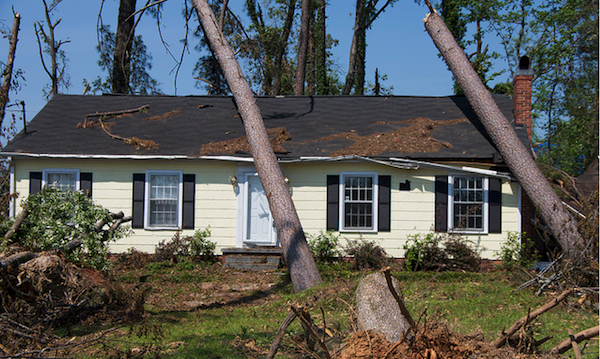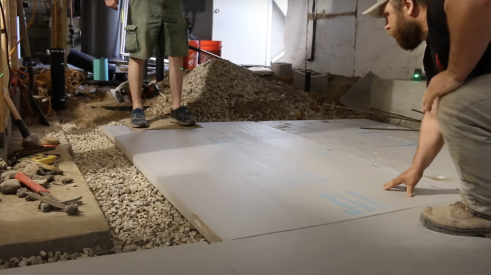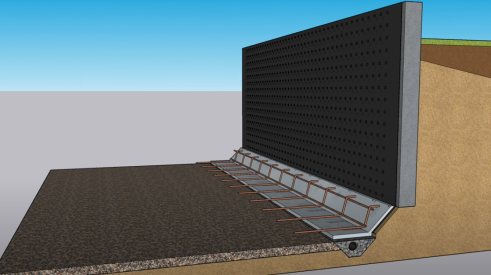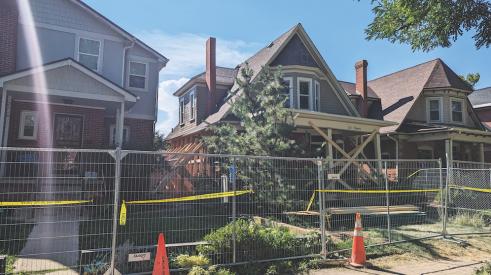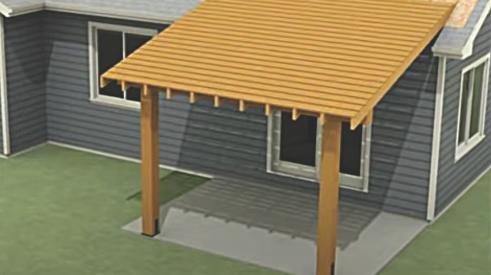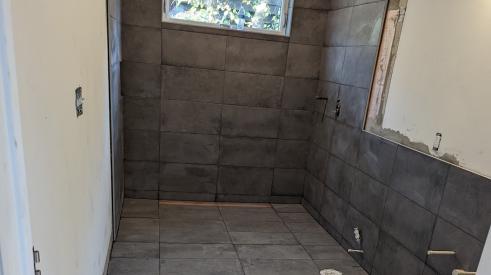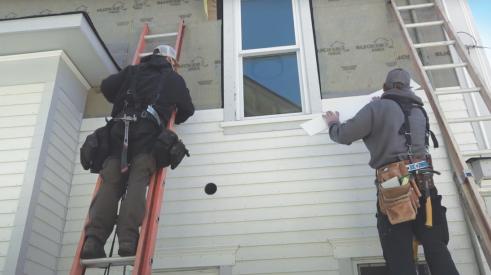Roof damaged by hail/heavy rain/wind/falling branches and other tree debris? You own a home, but unless the damage is obvious—or you’re willing to climb the roof, which few owners are—you don’t know for sure. Not to worry. Chances are good that someone will soon be knocking on your door offering a free roof inspection.
The inspection reveals that the roof needs to be replaced. But guess what, that’s free too. Well, actually, your insurance company will be the one paying. And guess what, it gets better. The doorknocker, who’s now been up on your roof, assures you that the ($500, $1,000, whatever) deductible on your homeowners’ insurance will be “waived” if you sign right now. And, he might explain, though the insurance company will be footing the bill, he will need a deposit of $X to put you on the job schedule and purchase materials.
Schemes & Scams
Confused? Sound like a crock? Not to some homeowners.
Many roofing companies are adept at “insurance work,” that is, replacing a roof because inclement weather left it so damaged that the homeowner had no choice but to get a new roof. And many of them are set up to do mostly that kind of work, and they do it well at a perfectly acceptable price without schemes or scams. Moreover, free roof inspections—storm or no storm—are a legitimate marketing tactic by roofing companies that want to add business and gain market share.
But when “contractors” avail themselves of the homeowner’s ignorance and fear to sell the homeowner something that he doesn’t actually need, with the insurance company picking up the cost, that’s called insurance fraud. And, according to some sources, it’s becoming more common; so common that, according to the Insurance Information Institute, “fraud now accounts for about 10 percent of the property/casualty insurance industry’s incurred losses and loss-adjustment expenses each year,” as noted on roofing manufacturer GAF’s website blog.
The Better Business Bureau (BBB), some state regulatory agencies, and the media have been onto this for a while. Two years ago, Fox News in Philadelphia decided to investigate free roof inspections. In the wake of Hurricane (“Superstorm”) Sandy, a company called Vanguard Construction of South Jersey was approaching homeowners in Philadelphia’s Jersey suburbs offering free hurricane damage inspections. Here’s the gist: The reporting team, in a sting-type operation, had Vanguard out to inspect a 20-year-old roof. The team contacted a roof-leak specialist and had him look at the roof as well. The roof, the specialist said, was free of wind damage. Unaware that a second opinion had been rendered, the Vanguard project managers, after a 10-minute inspection, told the homeowner that there was wind damage to the roof. They also told the homeowner the date the damage occurred, to be submitted to the insurance company. The deductible would be eliminated in exchange for planting a lawn sign.
When Fox News informed Vanguard that it was conducting an investigation, it quite naturally got stonewalled. Meanwhile, the network called the New Jersey insurance commission to inquire whether the commission was aware of the practices of this company. In fact, the commission was investigating Vanguard as well.
Patterns in Roofing Scams
But insurance companies are now pushing back, state legislatures are taking note, and prosecutions are popping up all over.
Sleight-of-hand billing is what got Indianapolis roofer Edwin Holmes in trouble with the law. He had separate invoices for the homeowner and the insurance company, and when investigators confiscated laptops, bank statements, and invoices, they found some invoices with interesting yellow Post-it Notes saying ‘Do not show to the insurance company,’ and ‘Do not share with the homeowner,’” according to a story on the wthr.com website of Indianapolis’ Channel 13. That resulted in Holmes being charged with two counts of forgery, two counts of insurance fraud, and two counts of theft. His lawyer says the charges are without merit.
Put yourself in the shoes of a homeowner who has had a storm blow through during the last year and whose roof may or may not have damage. Someone knocks. It’s a guy saying he’ll inspect your roof for free and replace it for free—that is, the insurance company will—if there’s a problem. And … no deductible. Mike LaFollette, who has done an excellent job of rounding up and classifying various roofing/insurance scams on the Angie’s List website, lists this as the second item on his list of Top Five roofing insurance scams. In all five cases, the roofing companies that are interviewed and offer comments on these situations advise Angie’s List members not to give the salesperson a deposit. But requesting a deposit is a standard business practice in roofing, and in home improvement in general.
The Better Business Bureau of Upstate South Carolina advises homeowners not to give a roofing company a deposit “until you’re sure they are reputable.” The BBB also notes that “Unscrupulous repair companies may use a teaspoon, small rocks, or hammers to fabricate damage,” or simply tear some shingles off the roof, photograph that, and present it as proof of wind, hail, or other storm damage.
Those Damned Deductibles
And how is it that deductibles simply go away? The Dallas-area BBB, alarmed by the number of signs posted by storm chasers and other roofing companies advertising deductibles waived, conducted an investigation and discusses in its blog how those deductibles are made to disappear—a change-order sleight of hand in which the insurer again eats the cost.
Legit roofing companies should have nothing to fear, except having to explain to the occasional wary homeowner that their company doesn’t engage in such practices.
What Proficient Roofing, in Texas, tells homeowners on its website is that deductibles only disappear if the contractor is working the numbers. The company asks this simple question (which, if you’re a legitimate roofing contractor engaged in insurance work, you may consider asking as well): “If your contractor is willing to defraud an insurance company, how likely are they to defraud you?”
--- Philadelphia-based freelance writer Jim Cory specializes in covering the remodeling and home improvement industry. Reach him with comments or story ideas at coryjim@earthlink.net.
Insurance work is a hefty source of revenue for some roofing companies; it’s also fertile ground for scammers
Add new comment
Related Stories
How to Insulate a Heated, Structural Slab with XPS
ProTradeCraft's Building Resilience season three starts with making a basement more comfortable
How to Retrofit Foundation Footings
To make a low-height basement a more comfortable living space, this remodeler digs deeper but needs to add support to do so
Crawl Spaces to Basements: Proceed with Caution
Converting a crawl space to other uses can upgrade a home and add significant value, but when done incorrectly, it can also be disastrous
Webinar: Project and Trade Management Musts—The New American Remodel 2023
Access the webinar here to learn project and trade management lessons from The New American Remodel 2023
How to Attach a Patio Roof to an Existing House
A graceful integration may mean more work but improved functionality and aesthetics
How To Improve Energy Performance in Existing Attics
There’s more to insulating the attic than attic insulation; there’s venting, air sealing, and misery
Model ReModel 2022: A Case Study in Sustainable, Thoughtful Construction
The eighth annual Model ReModel project features an accessory dwelling unit, designed for aging in place, attached to a 19th-century Victorian
Installing a Curbless Shower
Model ReModel 2022 features an ADA-compliant bathroom. The contractor shares the install process
How to Install PVC Bevel Siding Over Rainscreen
It’s a lot like installing wood bevel siding, except it won’t warp or rot. And it expands and contracts differently and for different reasons



